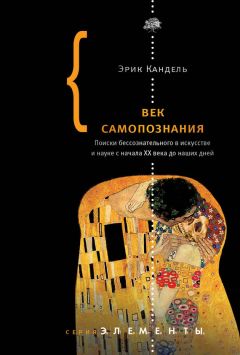Breiter, H. C., Gollub, R. L., and R. M. Weisskoff Acute effects of cocaine on human brain activity and emotion // Neuron 19 (1997): 591–611.
Cardinal, R., Parkinson, J., Hall, J., and B. Everitt Emotion and motivation: The role of the amygdala, ventral striatum, and prefrontal cortex // Neuroscience and Biobehavioral Reviews 26 (2002): 321–352.
Churchland, P. S. Brain-Wise: Studies in Neurophysiology. Cambridge, MA: MIT Press, 2002.
Colby, C., and C. Olson The Organization of Cognition / In: Principles of Neural Science. 5th ed. E. R. Kandel, J. H. Schwartz, T. Jessell, S. Siegelbaum, J. H. Hudspeth, eds. New York: McGraw-Hill, 2012. Ch. 18.
Damasio, A. The somatic marker hypothesis and the possible functions of the prefrontal cortex // Proceedings of the Royal Society of London B 351 (1996): 1413–1420.
Damasio, H., Grabowski, T., Frank, R., Galaburda, A. M., and A. R. Damasio The return of Phineas Gage: Clues about the brain from the skull of a famous patient // Science 254 (5162) 1994: 1102–1105.
Darwin, C. The Expression of the Emotions in Man and Animals. New York: Appleton-Century-Crofts, 1872.
Delgado, M. Reward-related responses in the human striatum // Annals of New York Academy of Science 1104 (2007): 70–88.
Foot, P. The problem of abortion and the doctrine of double effect // Oxford Review 5 (1967): 5–15.
Freud, S. The Unconscious. London: Penguin Books, 1915.
Frijda, N. H. Emotion experience // Cognition and Attention 19 (2005): 473–498.
Fuster, J. M. The Prefrontal Cortex. 4th ed. London: Academic Press, 2008.
Greene, J. D. Why are VMPFC patients more utilitarian? A dual-process theory of moral judgment explains // Trends in Cognitive Sciences 11 (8) 2007: 322–323.
Greene, J. D. Dual-process morality and the personal/impersonal distinction: A reply to McGuire, Langdon, Coltheart, and Mackenzie // Journal of Experimental Social Psychology 45 (3) 2009: 581–584.
Greene, J. D., Nystrom, L. E., Engell, A. D., Darley, J. M., and J. D. Cohen The neural bases of cognitive conflict and control in moral judgment // Neuron 44 (2004): 389–400.
Greene, J. D., and J. M. Paxton Patterns of neural activity associated with honest and dishonest moral decisions // Proceedings of the National Academy of Sciences USA 106 (30) 2009: 12506–12511.
James, W. The Principles of Psychology. Cambridge, MA, and London: Harvard University Press, 1890.
Knutson, B., Delgado, M., and P. Phillips Representation of Subjective Value in the Striatum / In: Neuroeconomics: Decision Making and the Brain. P. Glimcher, C. Camerer, E. Fehr, R. Poldrack, eds. London: Academic Press, 2008. Ch. 25.
Lang, P. J. The varieties of emotional experience: A meditation on James – Lange theory // Psychological Review 101 (104): 211–221.
LeDoux, J. The Emotional Brain: The Mysterious Underpinnings of Emotional Life. New York: Simon and Schuster, 1996.
MacMillan, M. An Odd Kind of Fame. Stories of Phineas Gage. Cambridge, MA: MIT Press, Bradford Books, 2000.
Mayberg, H. S., Brannan, S. K., Mahurin, R., Jerabek, P., Brickman, J., Tekell, J. L., Silva, J. A., and S. McGinnis Cingulate function in depression: A potential predictor of treatment response // NeuroReport 8 (1997): 1057–1061.
Miller, E. K., and J. D. Cohen An integrative theory of prefrontal cortex function // Annual Review of Neuroscience 24 (2001): 167–202.
Oatley, K. Emotions: A Brief History. Malden, MA: Blackwell Publishing, 2004.
Olsson, A., and K. N. Ochsner The role of social cognition in emotion // Trends in Cognitive Sciences 12 (2) 2008: 65–71.
Phelps, E. A. Emotion and cognition: Insights from studies of the human amygdala // Annual Review of Psychology 57 (2006): 27–53.
Rolls, E. T. Emotion Explained. New York: Oxford University Press, 2005.
Rose, J. E., and C. N. Woolsey The orbitofrontal cortex and its connections with the mediodorsal nucleus in rabbit, sheep and cat // Research Publications of the Association for Research in Nervous and Mental Diseases 27 (1948): 210–232.
Salzman, C. D., and S. Fusi Emotion, cognition, and mental state representation in amygdala and prefrontal cortex // Annual Review of Neuroscience 33 (2010): 173–202.
Solms, M. Freud Returns / In: Best of the Brain from Scientific American. F. Bloom, ed. New York and Washington, DC: Dana Pres, 2006.
Solms, M., and E. Nersessian Freud’s theory of affect: Questions for neuroscience // Neuro-psychoanalysis 1 (1) 1999: 5–12.
Thompson, J. J. Killing, letting die, and the trolley problem // Monist 59 (1976): 204–217.
Thompson, J. J. The trolley problem // Yale Law Journal 94 (1985): 1395–1415.
Глава 23. Биологическая природа реакций на прекрасное и безобразноеAdams, R. B., and R. E. Kleck Perceived gaze direction and the processing of facial displays of emotion // Psychiatric Science 14 (2003): 644–647.
Aron, A., Fisher, H., Mashek, D. J., Strong, G., Li, H., and L. L. Brown Reward, motivation, and emotion systems associated with early stage intense romantic love // Journal of Neurophysiology 94 (2005): 327–337.
Bar, M., and M. Neta Humans prefer curved visual objects // Psychological Science 17 (2006): 645–648.
Barrett, L. F., and T. D. Wagner The structure of emotion: Evidence from neuroimaging studies // Current Directions in Psychological Science 15 (2) 2006: 79–85.
Bartels, A., and S. Zeki The neural correlates of maternal and romantic love // NeuroImage 21 (2004): 1155–1166.
Berridge, K. C., and M. L. Kringelbach Affective neuroscience of pleasure: Reward in humans and animals // Psychopharmacology 199 (2008): 457–480.
Brunetti, M., Babiloni, C., Ferretti, A., del Gratta, C., Merla, A., Belardinelli, M. O., and G. L. Romani Hypothalamus, sexual arousal and psychosexual identity in human males: A functional magnetic resonance imaging study // European Journal of Neuroscience 27 (11) 2008: 2922–2927.
Calder, A. J., Burton, A. M., Miller, P., Young, A. W., and S. Akamatsu A principal component analysis of facial expressions // Vision Research 41 (2001): 1179–1208.
Carey, S., and R. Diamond From piecemeal to configurational representation of faces // Science 195 (1977): 312–314.
Cela-Conde, C. J., Marty, G., Maestu, F., Ortiz, T., Munar, E., Fernandez, A., Roca, M., Rossello, J., and F. Quesney Activation of the prefrontal cortex in the human visual aesthetic perception // Proceedings of the National Academy of Sciences 101 (2004): 6321–6325.
Cowley, G. The biology of beauty // Newsweek, June 3, 1996. Pp. 60–67.
Cunningham, M. R. Measuring the physical in physical attractiveness: Quasiexperiments on the sociobiology of female facial beauty // Journal of Personality and Social Psychology 50 (1986): 925–935.
Damasio, A. The Feeling of What Happens: Body and Emotion in the Making of Consciousness. New York: Harcourt Brace, 1999.
Darwin, C. The Descent of Man and Selection in Relation to Sex. New York: Appleton-Century-Crofts, 1871.
Downing, P. E., Bray, D., Rogers, J., and C. Childs Bodies capture attention when nothing is expected // Cognition B28-B38 (2004).
Dutton, D. D. The Art Instinct: Beauty, Pleasure, and Human Evolution. New York: Bloomsbury Press, 2009.
Elsen, A. Drawing and a New Sexual Intimacy: Rodin and Schiele / In: Egon Schiele: Art, Sexuality, and Viennese Modernism. P. Werkner, ed. Palo Alto, CA: The Society for the Promotion of Science and Scholarship, 1994.
Fink, B., and I. P. Penton-Voak Evolutionary psychology of facial attractiveness // Current Directions in Psychological Science 11 (2002): 154–158.
Fisher, H. Lust, attraction, attachment: Biology and evolution of the three primary emotion systems for mating, reproduction, and parenting // Journal of Sex Education and Therapy 25 (1) 2000: 96–104.
Fisher, H., Aron, A., and L. L. Brown Romantic love: An fMRI study of a neural mechanism for mate choice // Journal of Comparative Neurology 493 (2005): 58–62.
Fisher, H. E., Brown, L. L., Aron, A., Strong, G., and D. Mashek Reward, addiction, and emotion regulation systems associated with rejection in love // Journal of Neurophysiology 104 (2010): 51–60.
Gilbert, D. Stumbling on Happiness. New York: Alfred A. Knopf, 2006.
Gombrich, E. H. Reflections on the History of Art. R. Woodfield, ed. Berkeley, CA: University of California Press, 1987.
Guthrie, G, Wiener M. Subliminal perception or perception of partial cues with pictorial stimuli // Journal of Personality and Social Psychology 3 (1966): 619–628.
Grammer, K., Fink, B., Møller, A. P., and R. Thornhill Darwinian aesthetics: Sexual selection and the biology of beauty // Biological Reviews 78 (3) 2003: 385–407.
Hughes, R. The Shock of the New: Art and the Century of Change. 2nd ed. London: Thames and Hudson, 1991.
Kawabata, H., and S. Zeki Neural correlates of beauty // Journal of Neurophysiology 91 (2004): 1699–1705.
Kirsch, P., Esslinger, C., Chen, Q., Mier, D., Lis, S., Siddhanti, S., Gruppe, H., Mattay, V. S., Gallhofer, B., and A. Meyer-Lindenberg Oxytocin modulates neural circuitry for social cognition and fear in humans // Journal of Neuroscience 25 (49) 2005: 11489–11493.
Lang, P. A bio-informational theory of emotional imagery // Psychophysiology 1 (1979): 495–512.
O’Doherty, J., Winston, J., Critchley, H., Perrett, D., Burt, D. M., and R. J. Dolan Beauty in a smile: The role of medial orbitofrontal cortex in facial attractiveness // Neuropsychology 41 (2003): 147–155.
Marino, M. J., Wittmann, M., Bradley, S. R., Hubert, G. W., Smith, Y., and P. J. Conn Activation of Group 1 metabotropic glutamate receptors produces a direct excitation and disinhibition of GABAergic projection neurons in the substantia nigra pars reticulate // Journal of Neuroscience 21 (18) 2001: 7001–7012.
Paton, J. J., Belova, M. A., Morrison, S. E., and C. D. Salzman The primate amygdala represents the positive and negative value of visual stimuli during learning // Nature 439 (2006): 865–870.
Perrett, D. I., Burt, D. M., Penton-Voak, I. S., Lee, K. J., Rowland, D. A., and R. Edwards Symmetry and human facial attractiveness // Evolution and Human Behavior 20 (1999): 295–307.
Perrett, D. I., May, K. A., and S. Yoshikawa Facial shape and judgments of female attractiveness // Nature 368 (1994): 239–242.
Ramachandran, V. S., and W. Hirstein The science of art: A neurological theory of aesthetic experience // Journal of Consciousness Studies 6 (6–7) 1999: 15–51.
Ramachandran, V. S. The Emerging Mind. The Reith Lectures. London: BBC, Profile Books, 2003.
Ramsey, J. L., Langlois, J. H., Hoss, R. A., Rubenstein, A. J., and A. Griffin Origins of a stereotype: Categorization of facial attractiveness by 6-month-old infants // Developmental Science 7 (2004): 201–211.
Riegl, A. The Group Portraiture of Holland. Intro. by W. Kemp. Los Angeles: Getty Research Institute for the History of Art and the Humanities, 1999.
Rose, C. An hour with Ronald Lauder at the Neue Galerie. September 4, 2006.
Salzman, C. D., Paton, J. J., Belova, M. A., and S. E. Morrison Flexible neural representations of value in the primate brain // Annals of the New York Academy of Science 1121 (2007): 336–354.
Saxton, T. K., Debruine, L. M., Jones, B. C., Little, A. C., and S. C. Roberts Face and voice attractiveness judgments change during adolescence // Evolution and Human Behavior 30 (2009): 398–408.
Schorske, C. E. Fin-de-Siècle Vienna: Politics and Culture. New York: Vintage Books, 1981.
Simpson, K. Viennese art, ugliness, and the Vienna School of Art History: The vicissitudes of theory and practice // Journal of Art Historiography 3 (2010): 1–14.
Singer, T., Seymour, B., O’Doherty, J., Kaube, H., Dolan, R. J., and C. Frith Empathy for pain involves the affective but not sensory components of pain // Science 303 (2004): 1157–1162.
Tamietto, M., Geminiani, G., Genero, R., and B. de Gelder Seeing fearful body language overcomes attentional deficits in patients with neglect // Journal of Cognitive Neuroscience 19 (2007): 445–454.
Tooby, J., and L. Cosmides Does beauty build adapted minds? Toward an evolutionary theory of aesthetics, fiction and the arts // Substance 30 (1) 2001: 6–27.
Tsao, D. Y., and W. A. Freiwald What’s so special about the average face? // Trends in Cognitive Sciences 10 (9) 2006: 391–393.
Winston, J. S., O’Doherty, J., and R. J. Dolan Common and distinct neural responses during direct and incidental processing of multiple facial emotions // Neurological Image 30 (2003): 84–97.
Zeki, S. Inner Vision: An Exploration of Art and the Brain. New York: Oxford University Press, 1999.
Zeki, S. Artistic creativity and the brain // Science 293 (5527) 2001: 51–52.
Глава 24. “Вклад зрителя”Allison, T., Puce, A., and G. McCarthy Social perception from visual cues: Role of the STS region // Trends in Cognitive Sciences 4 (2000): 267–278.
Clark, K. Looking at Pictures. UK: Readers Union, 1962.
Dijksterhuis, A. Think different: The merits of unconscious thought in preference development and decision making // Journal of Personality and Social Psychology 87 (5) 2004: 494.





